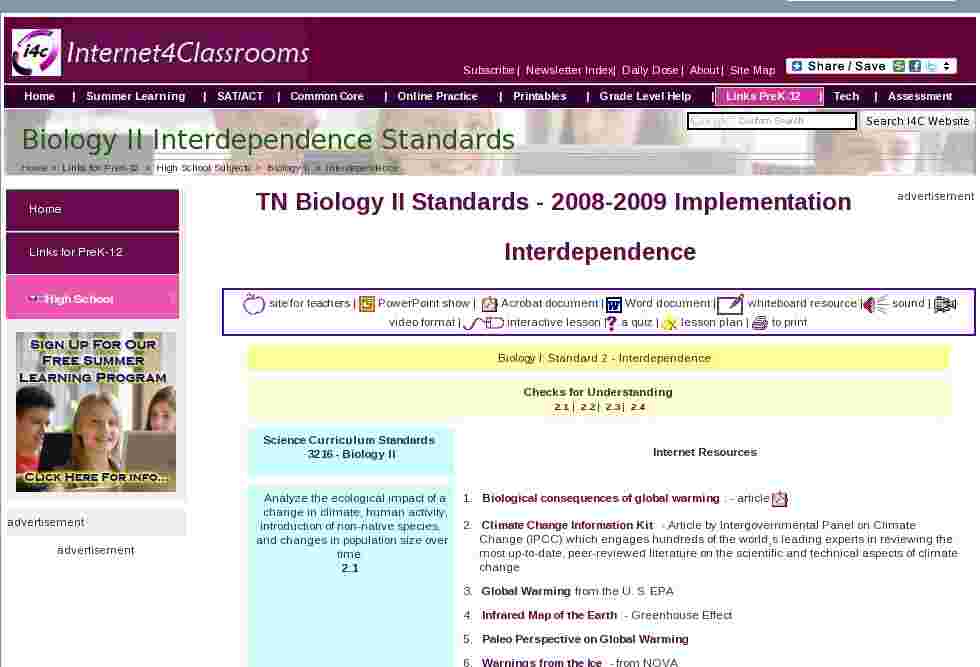advertisement
TN Biology II Standards - 2008-2009 Implementation
Interdependence
site for teachers |
PowerPoint show |
Acrobat document |
Word document |
whiteboard resource |
sound |
video format |
interactive lesson |
a quiz |
lesson plan |
to print
Science Curriculum Standards
3216 - Biology II
- Biological consequences of global warming: - article
- Climate Change Information Kit - Article by Intergovernmental Panel on Climate Change (IPCC) which engages hundreds of the world’s leading experts in reviewing the most up-to-date, peer-reviewed literature on the scientific and technical aspects of climate change
- Global Warming from the U. S. EPA
- Infrared Map of the Earth - Greenhouse Effect
- Paleo Perspective on Global Warming
- Warnings from the Ice - from NOVA
- Population Country Ranks - find rankings for a variety of demographic concepts
- Population Density
- Animated Map - human population growth through history
- Continental Population Density Maps, 1995: (click on thumbnail image for full size maps)
- Population density - (persons per sq km) - A listing of locations ranked from greatest density to least density
- Population Density on a World Map - This data set shows the number of people per square kilometer around the world in 1994.
- Summary Demographic Data - This page allows you to obtain summary demographic data and population pyramids for one country.
- Where People Live on Planet Earth - a color-coded map produced from populations estimates made for 1994. (click the map for a larger version)
- Population Growth Rate
- Human Population: 2006 Data Sheet - a thirteen-page document
- Population growth rate - a list of countries ordered from the highest growth rate to the lowest
- Population growth rate (All Descending) - a more detailed listing of the growth rates
Population Growth Rate - a learning module from the World Bank Group
Population Growth Rate Teaching Activities (with answers) - a learning module from the World Bank Group
- Biological consequences of global warming: - article
- Climate Change Information Kit - Article by Intergovernmental Panel on Climate Change (IPCC) which engages hundreds of the world’s leading experts in reviewing the most up-to-date, peer-reviewed literature on the scientific and technical aspects of climate change
- Global Warming from the U. S. EPA
- Infrared Map of the Earth - Greenhouse Effect
- Paleo Perspective on Global Warming
- Warnings from the Ice - from NOVA

Search Internet4Classrooms
 Custom Search
Custom Search
- Site Map |
- About Us |
- Teacher Training |
- Make Internet4Classrooms.com your home page. |
- Copyright © 2000-2024 Internet4Classrooms, LLC All rights reserved.
Use of this Web site constitutes acceptance of our Terms of Service and Privacy Policy.
1744510355032196 US 8 desktop not tablet not iPad device-width